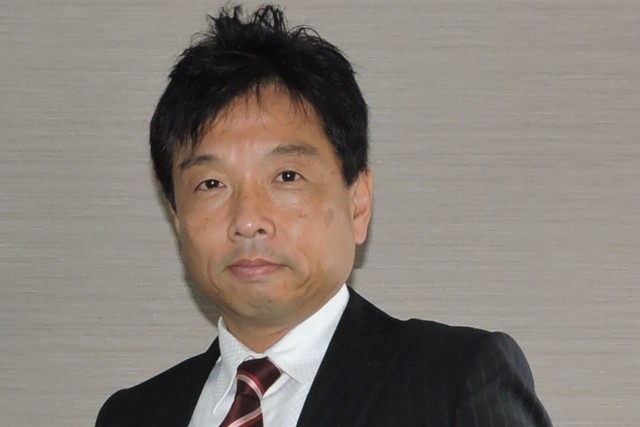
At FISITA 2018, we had an opportunity to sit down with Takashi Uehara, Chief Engineer, Power Train Product Planning Division, Toyota Motor Corporation, to discuss what means of mobility are available now and what could potentially surface not too long from now.
Interviewed by: Jim Gorde
Car India (CI): Toyota have a lot of experience in the hybrid space, thanks to the Prius, but what are the new developments? We’ve seen full electrics, battery electrics, and fuel-cell electrics; what in your opinion are the other major changes happening in the electric vehicle space and what will the hybrid of 2020 or 2022 look like globally?
Takashi Uehara (TU): For 2020 or 2022, I cannot tell you when but, of course, we have a new model with some improvement, but the target now is still secret.
CI: When the Prius happened, it was capturing efficiency which was being ignored before fundamentally. Today, why is the electric vehicle being considered the future? It’s not like the IC engine has become unattractive from any angle, nor the cost of fuel, nor the cost of making the car, nor the availability of infrastructure — all that is good. Why is the IC engine being considered “dead” for the future?
TU: I don’t think the IC engine would be dead for the future. I think the IC engine will survive for a very long time in the future because of the gasoline or crude oil is very easy to handle with very high energy density. Electricity, as you know, is difficult to store so that is the reason why the IC engine would survive for such a long future.
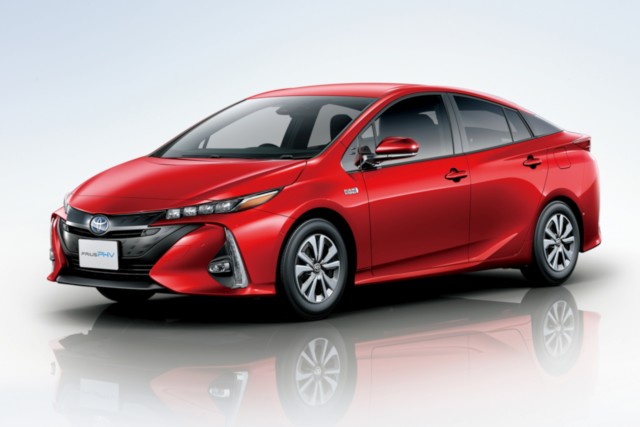
Toyota Prius Plug-in Hybrid
CI: As a person involved in powertrain, would you believe that the IC engine is at its optimization? Has it plateaued or are more improvements possible?
TU: I think it’s possible, but with the current technology, to get higher efficiency with the IC engine the cost will be very high. Of course, we have to study electrification, including EV, but we have to also study the ICE for the future.
CI: What sort of challenge is it, given that Toyota sell cars in many developing economies such as India and given that hybrids are expensive or even a regular hybrid because the battery pack is an expensive part of the cost? What about meeting the challenge of cost because the governments want to reduce emissions, too. What are the challenges you face with cost, with regard to batteries? We hear about new battery technology with more energy density. Can you give us an idea about how battery technology is evolving? We have heard energy density has doubled. So what are the emerging battery technologies in your opinion?
TU: If we increase the energy density of the battery, the size of the battery cell would be larger and also we don’t expect too much battery cell technology improvements for the future, because more than 60 per cent of the battery cost consists of the raw materials. In many countries, the demand for the batteries would increase, but the cost itself cannot be I think decreased in case of EVs. In HV also we need some improvement in the power mass of the battery cell. But for hybrids, the power output of the battery is much more important than energy quantity. The type of the battery is different.
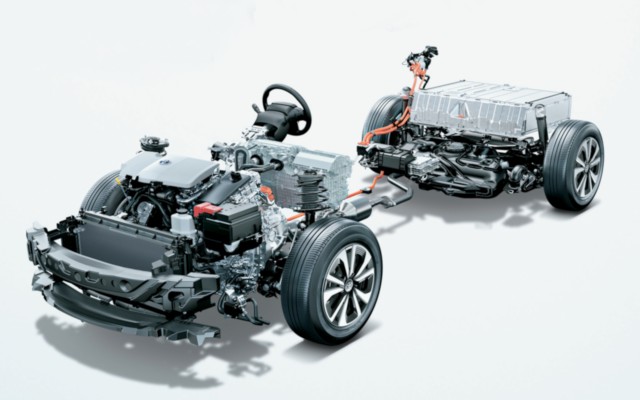
This is what drives the Toyota Prius
CI: Is there an alternative to lithium? Can you use any other material instead of lithium?
TU: The battery reaction will be a chemical reaction. There is a long history in the study of materials and the voltage. So, for the moment, lithium or nickel metal hydride would be the best. Other materials we are studying, but not so easy to find out. The main thing in the battery is a global issue. The main problem with the battery is that the raw material cost is 60 per cent. To reduce the battery cost, because of volume we can work on 40 per cent, but remaining 60 per cent raw-material costs are not going to come down. There is a challenge. Till we change the technology, we cannot reduce the cost so much. Everybody is facing the same challenge.
About the other technology, currently proven technologies are nickel metal hydride and lithium-ion that everybody is using. Of course, we are working on other materials but it needs a technological breakthrough, but it may take time to prove that technology. But with hybrids, because we use the limited size of battery, the battery requirement is low. So the cost impact, compared to electric, is lesser because battery size is low. And this battery keeps on charging and discharging on a dynamic basis when it is on the vehicle, so the utilization and the energy efficiency are very high. So, from that point of view, if you see the battery size of a hybrid is small and is more cost-effective compared to an EV. But that technology needs to evolve.
CI: What about the availability of raw materials? Will the prices go down?
TU: This is a global issue. So it’s not so easy to control.
CI: Why have Toyota taken a big bet on fuel cells? You believe in hydrogen. Why do you think hydrogen is also a viable source?
TU: The good point of hydrogen is, for example, from electric power plant with crude oil we can get hydrogen as a by-product. Also, there is a possibility to get hydrogen with renewable energy like wind or soil. For the future, many developments would be required, but this is a good point of hydrogen. Also, for the future we have to secure energy issue for every country of the world. We need many different possibilities — hydrogen, there is a possibility and also electricity. So that’s the reason why we are studying hydrogen.
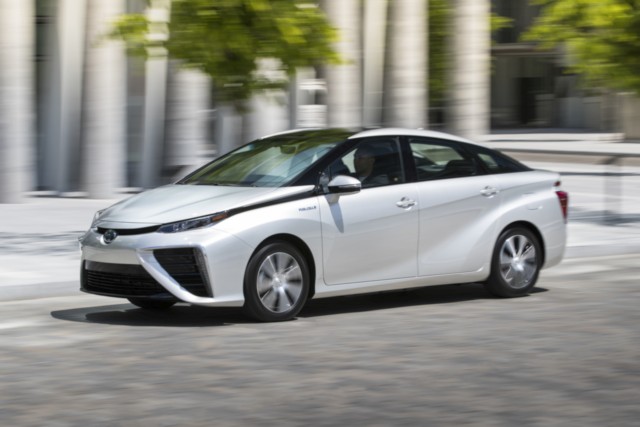
The Toyota Mirai fuel-cell electric vehicle powered by hydrogen
CI: You have seen the Indian market and the conditions, so what do you think will be the most ideal solution? Will the HEV be the most ideal solution for India?
TU: For the future, I cannot tell you clearly because if there is a technical or engineering development, maybe the world could be changed. For the growth future, now Toyota is spreading HEV to the world. To reduce the CO2 without support, HEV is most suitable, we think. Technology to develop hybrid can be used for the EV, fuel cell and all types of vehicles. But looking at the conditions of each region, we should supply the best powertrain.
CI: India is also a very cost-sensitive market. If you look at PHEV versus an HEV, battery size is smaller, dependence on infrastructure is lower, it’s more practical to have a smaller IC engine. Do you think that makes more sense?
TU: Yes.
CI: All these hybrids have always been petrol. Now there are a few diesel hybrids. What are your views on diesel hybrids? Diesel is, by its nature, more energy-efficient and you can have more torque from an engine, especially a smaller-size turbo-diesel. What are your views on a diesel hybrid? Do you think it can make a change?
TU: We have studied diesel hybrids before, actually. It doesn’t depend on hybrid or no hybrid; diesel itself, very recently, is very expensive to meet the regulations. To meet exhaust emissions regulation, the main area, with diesel is very difficult.
CI: The thing is, with petrol you cannot control CO2 emission; with diesel and heated catalysts, they have been tested and show it is 1/10th of that. If it comes true, won’t diesel be more preferred? We have subsidized diesel here, but, globally, looking at CO2 and overall efficiency, doesn’t diesel make more sense?
TU: If we put very big cost in diesel for just CO2 to reduce the emission, maybe we can take that as an option. For example, hybrid has a very big amount of the battery, maybe we can reduce the CO2 also. There are two areas basically. One is that diesel has particulate matter. We have to be very careful about the environment. So, from that point of view, there is a huge cost. Now Euro VI is coming then RD is coming, the cost of the diesel is going to increase a lot. In that, if you put hybrid, from the customer affordability point of view, it becomes difficult. One is cost point of view and second is environment point of view. We think that the gasoline hybrid is more acceptable. Because CO2 by hybrid we are taking care. We need not put diesel again on hybrid. It would need more emission control, AdBlue, and so on.
CI: The Indian road conditions being very difficult, including bad roads and flooding, people have raised concerns about electric vehicles because there is a charge in the vehicle. From the safety point of view, I know Toyota sold 12 million electrified cars, but are there some risks with electric vehicles that need to be managed in a country like ours? Will we get a shock if the car drives on a flooded road?
TU: Before we introduce it to the market, we resolve this. We eliminate the risk, even with the high-voltage EV system. We made it clear that with EVs, we are taking care of high voltage and there has to be proper evaluation. We have strict criteria when bringing new vehicles in the market. If that is not done, then there is a big risk, otherwise it is completely taken care of: how earthing and other things should be taken care of so that there is no shock. Toyota are working for so long, we have developed a system so that there is no problem even in flood conditions and so on. But this aspect has to be taken care of by everybody.
CI: The four aspects of Future Mobility are Connected, Autonomous, Shared, and Electric (CASE) — what’s your take on this? Will all these technologies go together in one product by 2020 or 2050?
TU: All we have to do. For us, we are from the powertrain side, so our job is electrification. But, as we said, CASE — connectivity and also autonomy and sharing — we are studying everything in the other departments at Toyota.
CI: At the same time, you are developing new, exciting petrol engines. What challenges do you face? How do you divide your time? How does your team divide their time looking at different technologies while continuing to develop products for today’s market?
TU: For the six-cylinder engine with new Supra, the staff for the development of this was completely different.
CI: In a market like India, there was a point in time when Toyota made the Prius only in Japan. Now you also make it in other markets. So if you look at India, do you believe you can localize and produce some of these vehicles in India to bring down the cost?
TU: There are some possibilities. I think we could.
CI: Would it be completely knocked down (CKD)? Or what sort of system assembly?
TU: It depends on the quality of the parts that can to be sourced locally. But we can partner with Indian suppliers to make the performance and quality of the parts higher and higher and meet our requirements. For the future, if we decide to localise here, we can do with a few Indian companies.
CI: So, is there a possibility of an Etios HEV? Not specific to Etios, but do Toyota believe that you can now have local cars that can use these systems to be converted into HEVs?
TU: I cannot tell you anything about the future, but, yes, there is some possibility, I think.
CI: We have seen the hardware. How important is the software for the entire system? A car is a computer nowadays; we know that. How important is the software in an HEV or PHEV and where does your software work happen? Is your software team only based in Japan or is it based across the world at various R&D centres?
TU: Now the construction of software is very complicated and has many layers. Many people are involved in the software development for one vehicle. It is important to share the information very quickly and have a systematic chain for making software for one vehicle. There are many Toyota subsidiaries in the world, so part of the software development is done in Europe, also in Asia and the US.
CI: How soon can we expect 48-volt systems to come into the mainstream and filter down to small cars?
TU: We also have studied 48V but, same as EV, we have to see the conditions of the area and we will judge. So, at the moment, I cannot say yes or no. As a technology, 48V is not tough. We are working on a very high voltage, any time we can do it. But the most important thing is what customers get: cost-competitiveness versus performance. So if you are getting that performance at the cost-competitiveness which customers can accept, then that technology can be brought.
CI: What will happen to the automotive engineers working on the IC? Can they move to EVs or HEVs easily?
TU: They are still working with high motivation because they have to spread engine production all over the world. They have to increase efficiency with limited cost. Our engineers, production/designers are still highly motivated. Some engineers, due to electrification, have changed their jobs from design to electric vehicle field, but still the designers in IC engines are working very well. In India, talking about 2025, still 70 per cent will be IC engine bases, so the IC engine will not die. It will become more efficient, but also come with hybrid. There will be some EV also. All technologies will exist. So IC engine is still very important.
CI: Do you believe that between now and till when HEV can be affordable in India, the parallel-assist systems or mild-hybrids can be a more practical middle path?
TU: We have already developed mild-hybrid systems and also introduced them to the Japanese market, so we have the experience there. But, at the moment, we have judged that it is better to go with strong hybrid systems in terms of performance and price.
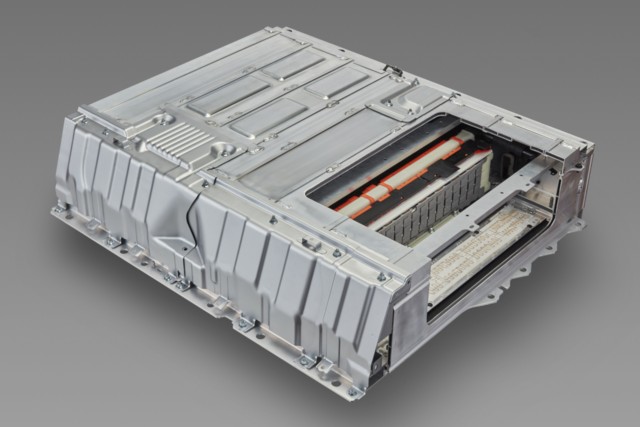
Toyota Prius Plug-in Hybrid vehicle battery pack
CI: Do you have any thoughts on Variable Compression Technology being brought in nowadays in IC engines to make them more efficient? Is that a viable technology in your opinion?
TU: We have the technology already, but we have not yet introduced to the market because we think for the moment we don’t need it. In my opinion, if we can change the compression ratio, cycle by cycle, if it is so quick, then I want it, but the speed of the changing is not so quick. To change the compression ratio, to avoid knocking and so on, is not easy. We have to also avoid higher emissions. We don’t think we can get such high efficiencies by doing this.




















Leave a Reply